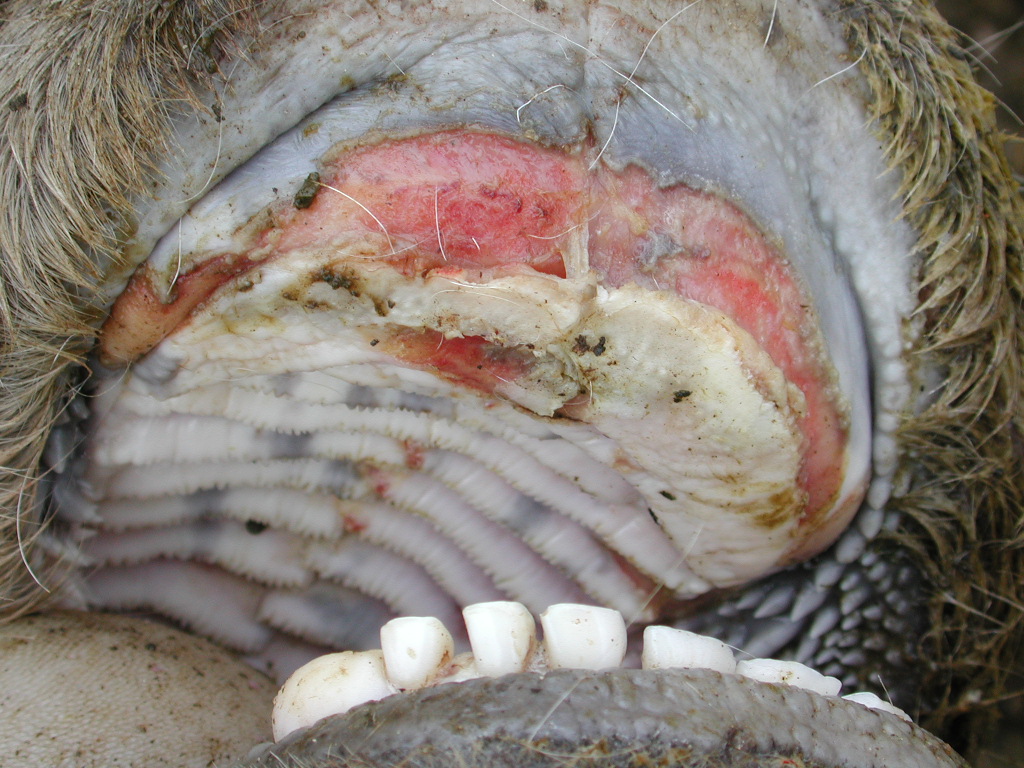Foot-and-mouth disease
Foot and mouth disease is a highly contagious animal disease that affects all cloven-hoofed animals including cattle, sheep, goats, camelids (eg alpacas, llamas and camels), deer and pigs. Cloven-hoofed animals are those with a split toe. It does not affect horses.
The virus is carried by live animals and in meat and dairy products, as well as in soil, bones, untreated hides, vehicles and equipment used with these animals. It can also be carried on people’s clothing and footwear.
The FMD virus can survive in frozen, chilled and freeze-dried foods including meat and dairy products.
Infected countries are isolated from the global livestock trade. An incursion of FMD into Australia would lead to a loss in production of meat and milk, cessation of trade, and necessary slaughter of many animals.
Foot-and-mouth disease is a nationally notifiable disease. This means an animal showing suspect signs of the disease must be reported to a Local Land Services District Veterinarian on 1300 795 299 or the Emergency Animal Disease Watch Hotline on 1800 675 888.
Animals at risk of foot-and-mouth disease
FMD affects can affect all cloven-hooved animals include cattle, buffalo, sheep, goats, pigs, der, alpacas, llamas, and camels.
Onset and severity of clinical signs will vary between animals. Vesicular lesions (blisters, ulcers, and sores) in cattle may be found in the mouth and on the feet, muzzle/nostrils, and teats.
Clinical signs of foot-and-mouth disease
Cloven-hoofed animals with FMD may exhibit one or more of the following clinical signs:
- blisters on the mouth, snout, tongue, lips, teats, or feet
- erosions remaining after blisters rupture
- drooling
- fever (39.4 - 41.1°C)
- limping and reluctance to move
- production losses.
Specific clinical signs of FMD in cattle
- Fever up to 42°C accompanied by depression, inappetence, and sudden stop of milk production in dairy cattle.
- Smacking of the lips, teeth grinding, drooling, lameness, reluctance to stand, stamping, or kicking of the feet.
- Vesicle formation on buccal (oral) and nasal mucous membranes, on the mammary glands and/or between the claws and coronary band
- Rupture of vesicles leaving erosion.
Complications may include secondary infection of lesions, hoof deformation, mastitis and permanent impairment of milk production.
Death of young animals from viral myocarditis (inflammation of the heart muscle).
Specific clinical signs of FMD in sheep and goats
In sheep and goats, FMD is usually mild with few lesions, however, clinical signs can include fever, lameness and oral lesions.
- Lesions in the oral cavity are not prominent, however, vesicles, when present, are most likely to occur on the dental pad and caudal and dorsal portions of the tongue
- Lameness is often mild
- Foot lesions along the coronary band or interdigital spaces may go unrecognised, as may lesions on the dental pad
- Agalactia (milk production failure) in milking sheep and goats
- Death of young animals from viral myocarditis.
Specific clinical signs of FMD in pigs
- Fever, inappetence and reluctance to move
- Often a severe lameness with vesicle formation around the top of the foot, on the heels and between the claws
- Vesicles may occur on the snout, inside the mouth and on teats of sows
- Abortion is common and may be the presenting clinical problem in pigs with FMD.
What does foot-and-mouth disease look like?
Following are a collection of images with the clinical signs of foot and mouth disease to aid in recognising FMD in a range of livestock.
More are available at the Animal Health Australia website.
Foot-and-mouth disease in cattle - mouth lesions (Image: Mark Stevenson)
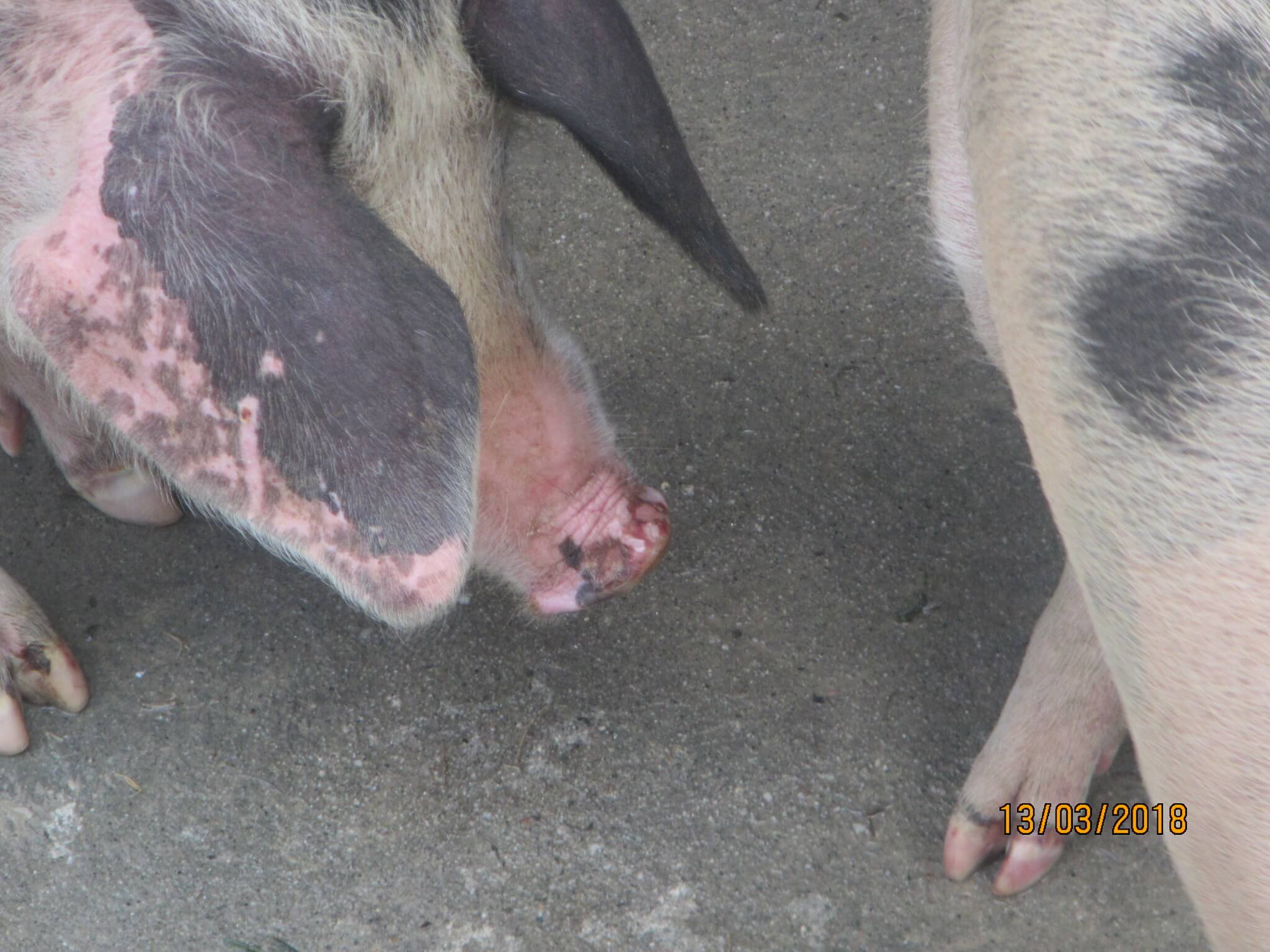
Foot-and-mouth disease in pigs - blisters (Image: FAO-EUFMD)
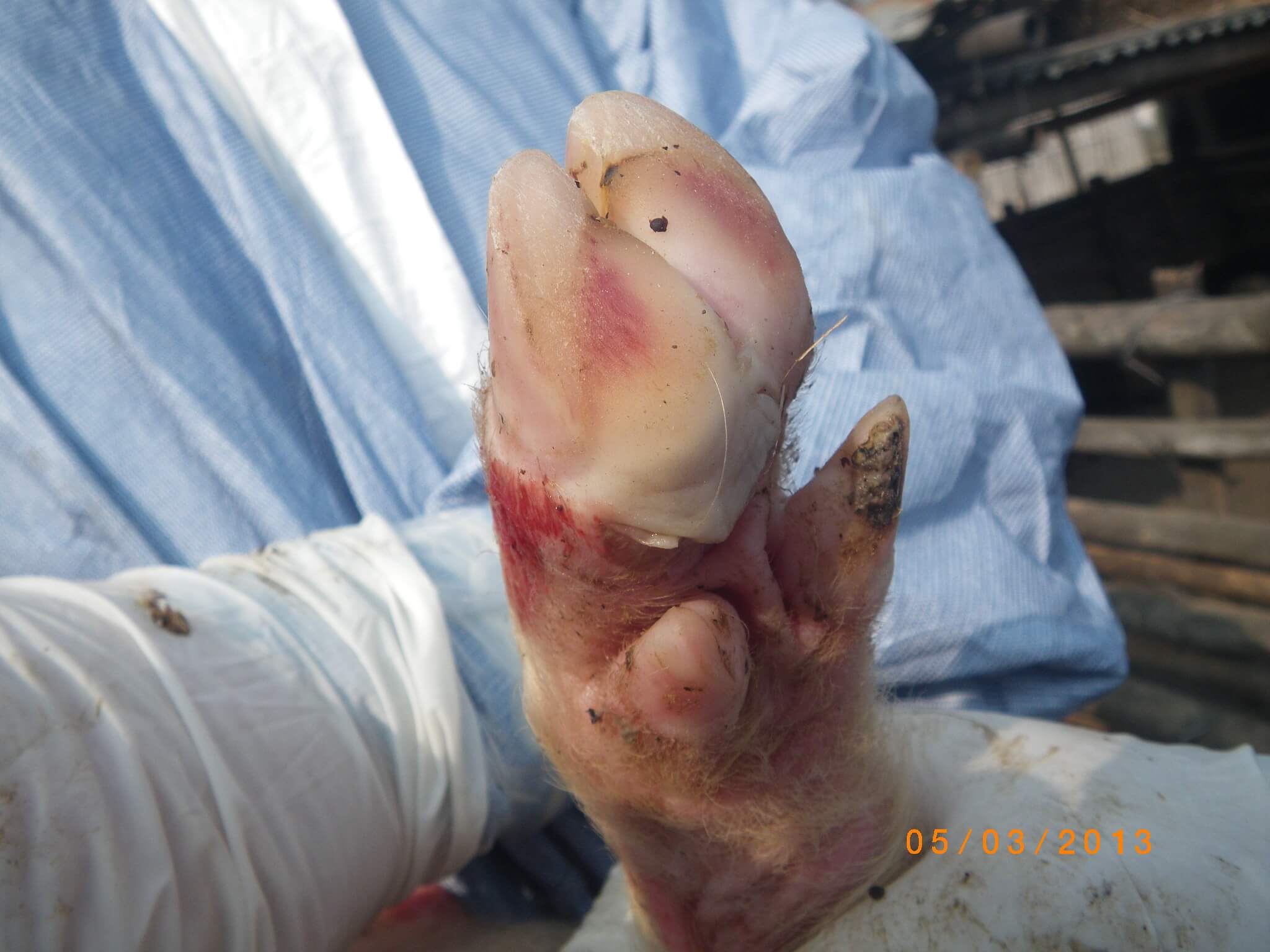
Foot-and-mouth disease in pigs - hoof lesions (Image: FAO-EUFMD)
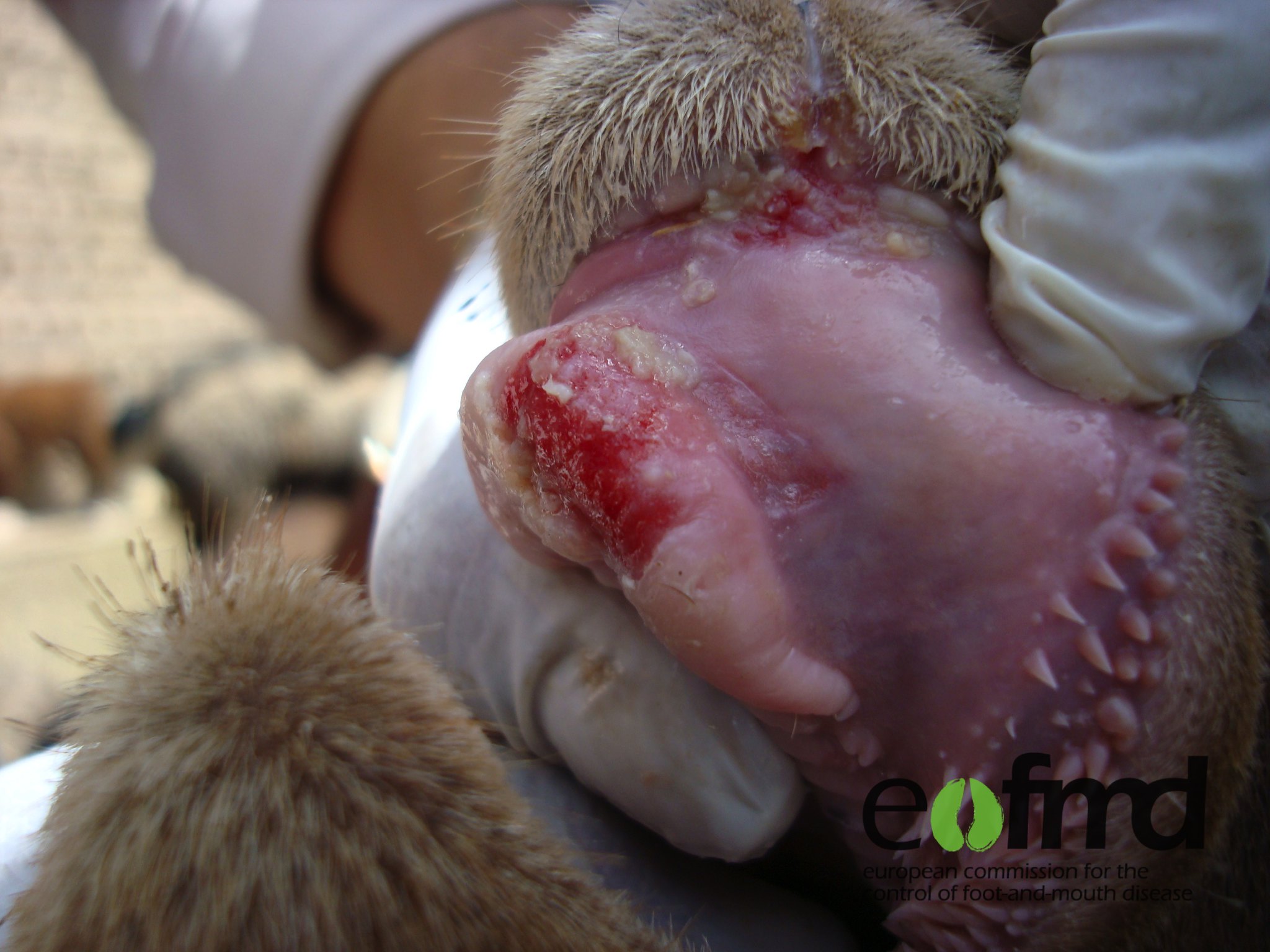
Foot-and-mouth disease in sheep - mouth lesions (Image: FAO-EUFMD)
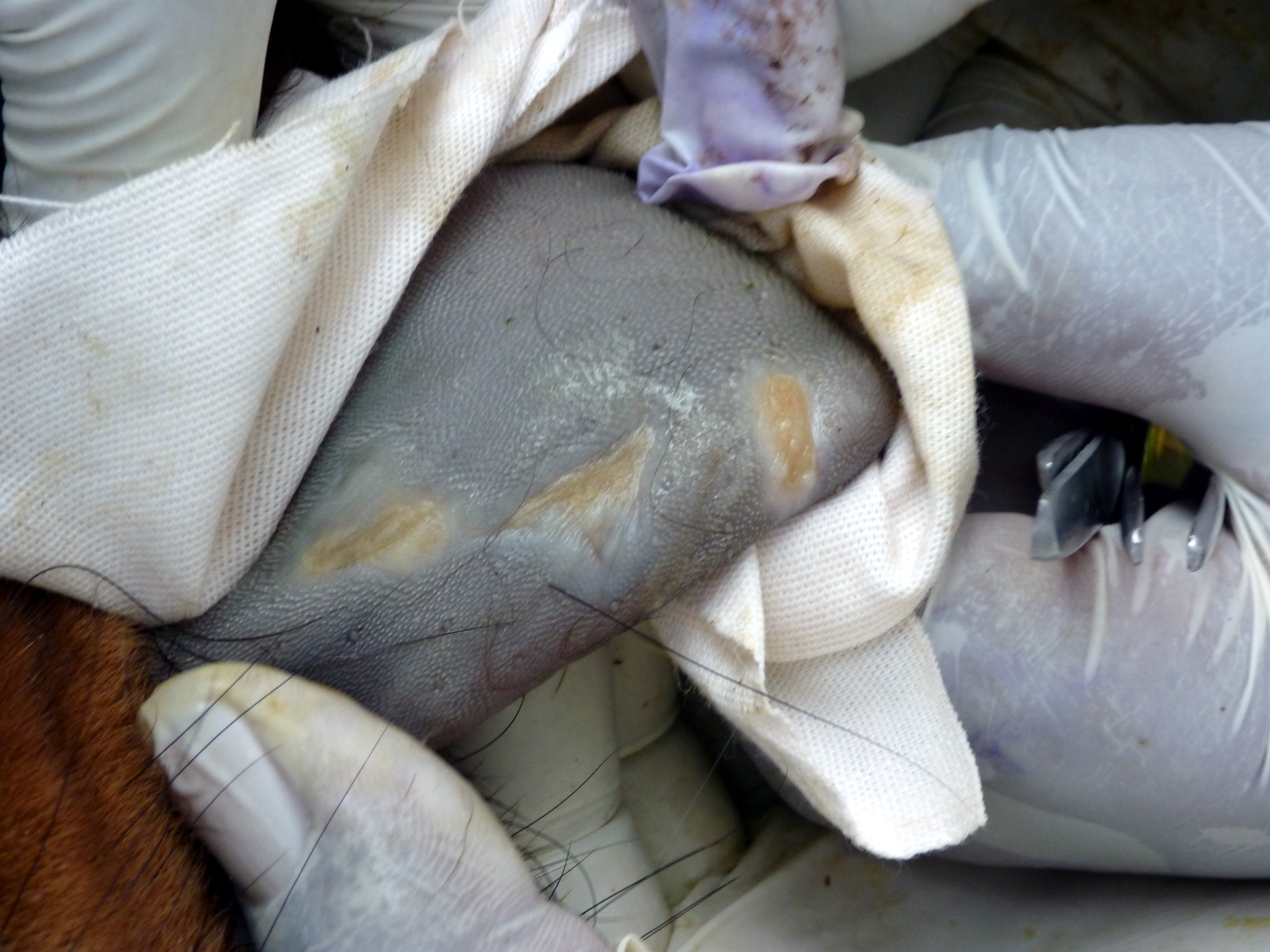
Foot-and-mouth disease in cattle - tongue blisters (Image: Mark Stevenson)
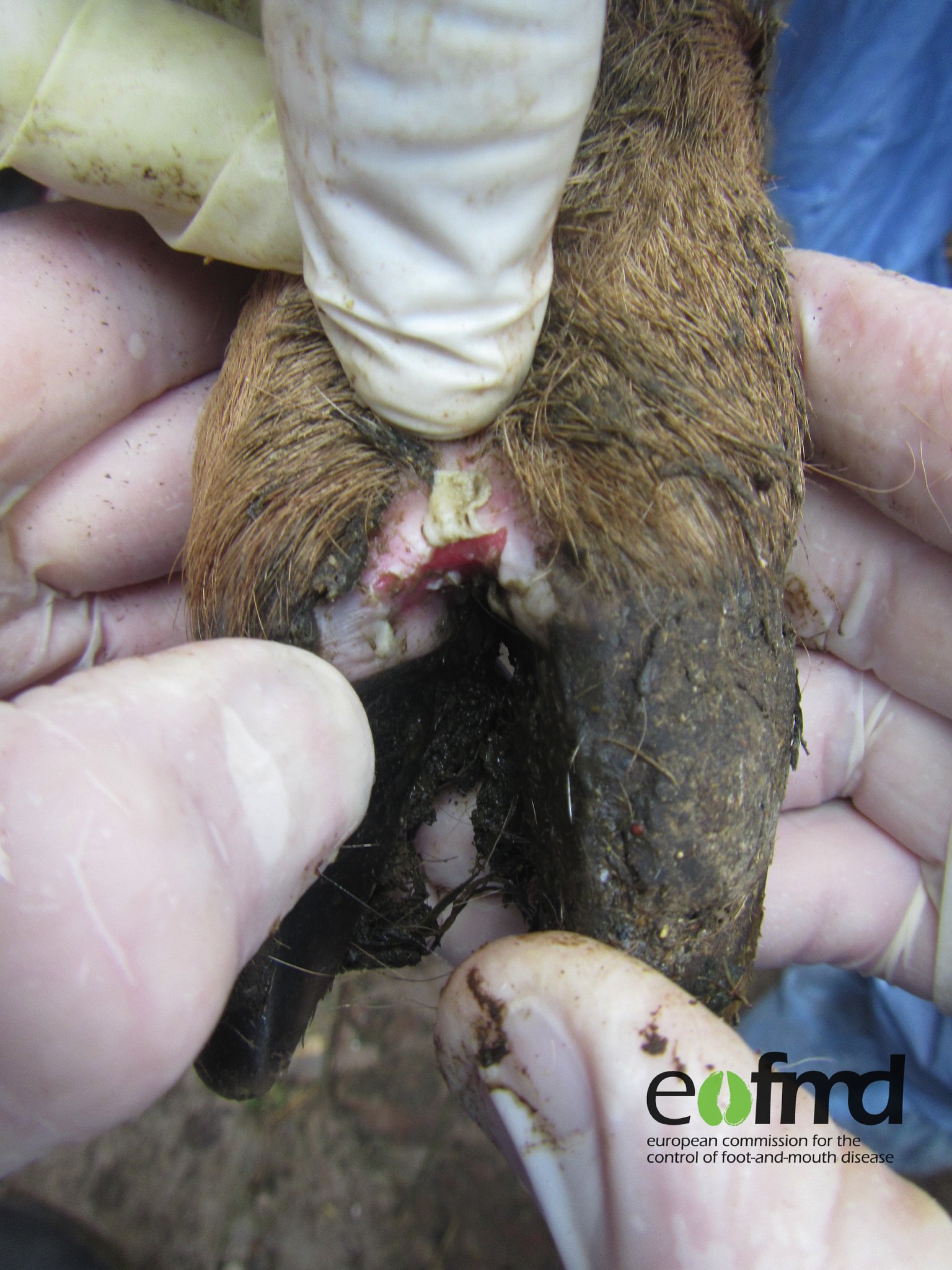
Foot-and-mouth disease in sheep - hoof blisters (Image: FAO-EUFMD)
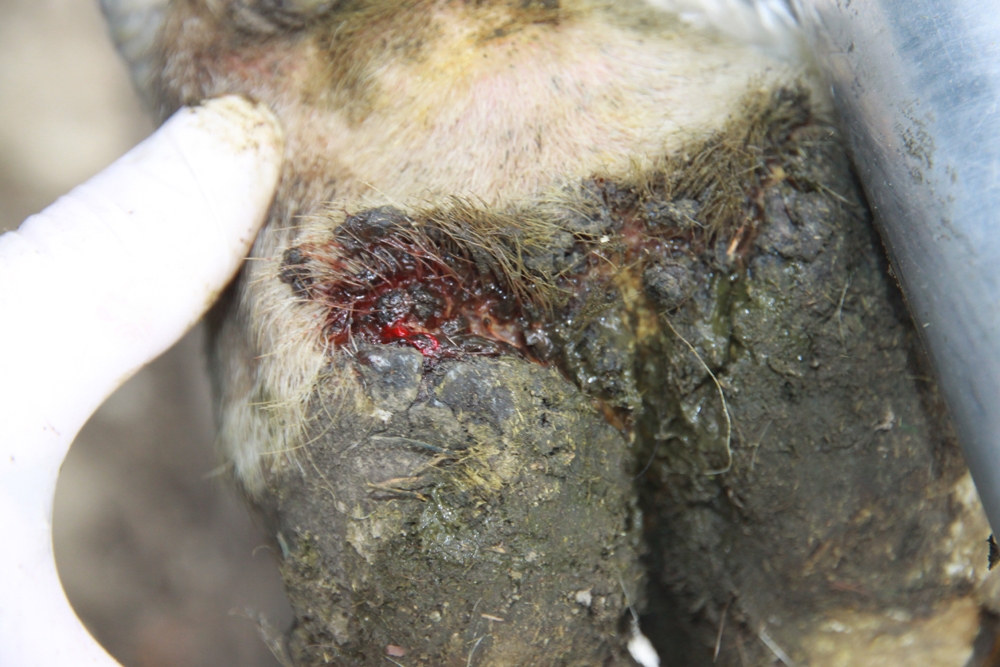
Foot-and-mouth disease in cattle - hoof blisters (Image: Mark Stevenson)
How is foot and mouth disease spread?
The FMD virus is carried by live cloven-hoofed animals, as well as in soil, bones, untreated hides, vehicles and equipment used with these animals. The FMD virus can survive in frozen, chilled and freeze-dried foods including packaged meat and dairy products.
Foot and mouth disease can be spread through close contact between animals and can be carried on animal products, equipment, people’s clothing or by the wind.
FMD is capable of extremely rapid spread. Entire herds are known to have be infected within 48 hours. Cattle are most susceptible to loss, however the disease spreads fastest in pigs.
Can you treat foot and mouth disease in cattle?
There is no specific treatment for FMD. The conventional method of treating infected animals overseas involves the use of antibiotics and mild disinfectants. Because there are a large number of FMD virus strains, maintaining effective levels of vaccination and herd immunity is challenging. Vaccines need to match with the regional strain causing FMD. The protection period is generally short-lived, often 12 months or less.
Australia has access to an FMD vaccine bank for use in the event of an outbreak. Australia is currently recognised as ‘free from FMD, without vaccination’, allowing international trade to continue. This status would be lost if pre-emptive vaccination were implemented.
Read more about foot and mouth disease (NSW DPI).
Join our dedicated biosecurity mailing list to get the latest updates.
